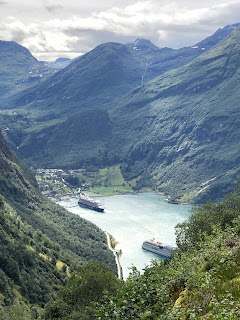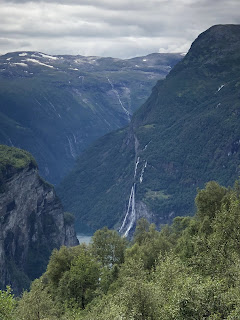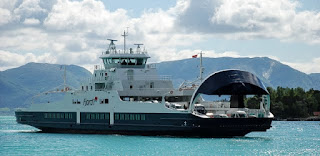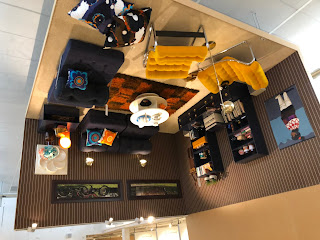 |
| 188 miles from Oslo, and 52 years since driving on the left |
Tonight you find us in probably the best wild camping spot, ever, waiting out the 24 hours between the spaniels’ visit to the vet for their worming treatment, and the earliest time after that we can cross the border to Norway. In the past two days we have crossed Sweden from east to west, watching the scenery grow wilder and signs of human life grow sparser. Motorhomes are a regular feature of traffic coming towards us, many will be returning from Norway. Sometimes when we wave you see eyes flick across to register that we are right hand drive, and I wonder how many Swedes remember when they drove on the left. The whole country changed sides overnight on H-day, 3rd September 1967, when road signs, lines, junctions, everything suddenly worked the other way around. That must have been a fun few days!
We left Stockholm yesterday after taking the pups for a walk along one of Sweden’s ubiquitous cycle/footpaths through a meadow, a housing estate and a block of flats, until we reached the picnic area for residents of the flats. It was a great oasis in the suburbs, and it was indication of how warm it was getting that Elsa was faced with an expanse of green and didn’t ask for her ball.
After that it was straight to Karlskoga, where an appointment had been made with a vet early this morning. We took the opportunity to do a big shop in Lidl, as food prices will be much higher in Norway. Unfortunately, the lovely motorhome site in Karlskoga was full by the time we arrived at 4pm. Hardly surprising as all the beautifully manicured spaces look out onto the lake. However, we saved ourselves fifteen quid by overnighting in the car park behind, and using the services in the morning.
 |
| Barbecue night! |
By 0830 we were at the vet, where Max and Elsa were weighed, had their chips read, and were given worming tablets. Passports duly stamped and signed by the vet, they were clear to cross the border to Norway between 24 hours and 5 days after taking the pills. It’s exactly the same procedure as we go through when we bring the dogs home from France, and just under £35 for each dog was about what we would expect.
The early start had prevented a proper walk, so we headed back to the lake. The temperature was already climbing rapidly and both dogs were keen to get in the water. The presence of ducks prevented us from letting Max off the lead, so we tried to play a brief game of ball on the eight meter retracting leads. The problem is, Elsa struggles to get her mouth around the ball when she’s swimming, and it tends to bob away from her. This time it bobbed further and further. Elsa swam further, and I walked further out into the lake after her, in my shorts and sandals, holding my bum bag and phone up out of the water. Still she couldn’t get her mouth around it. Eventually I had to call her in, return to shore to leave my valuables, and wade out to the ball. By this time it was out of my depth, and I commend the elderly lady sunbathing on the shore for not blinking an eye at the sight of me swimming out to retrieve a £2.50 rubber ball, fully dressed, and wearing a straw hat.
After a quick change in the van, it was off to the off-licence for a couple of boxes of wine, and to Willy’s supermarket for ice-cream to go with the delicious Swedish strawberries we’re finding on sale everywhere at the moment. By lunchtime we were ready to relax in the sun in this wonderful spot, 700m off a minor road down a gravel track. (N:59.3877639 E:12.0997356) We have it to ourselves. Thanks Park for Night, you did us proud with this one.
 |
| Now this is a wild camping spot |




















































